Canals, Caminos & Culture
Leaving Béziers is easy. It's a 15-minute walk downhill to the train station. We take the route through the park, after checking out of the apartment just before 11. Just after 11, we're having coffee across from the train station. At 12, we get on the airport shuttle service for 2 euros each and are at the airport by 12:30. Check-in is smooth, but we are flying Ryanair, so things are a bit strange. When it's time to board, we all head out onto the tarmac and mill around, waiting to enter the plane. One bloke lights up a cigarette, and no security seem to notice.
Our flight to Porto is delayed a few times. Originally, it was due to depart at 6:10, then it was delayed to 6:40, and finally to 7:10 p.m. However, on arrival in Porto, everything is smooth and quick. At the carousel, an LED sign tells us when the first luggage is due out—just 3 minutes later, and ours is among the first. Then it’s out the door, and we see our bus, the 661, arriving. It’s a 30-minute drive into the old town center where we are staying, and
Chris Maher
23 chapters
20 Aug 2024
Port in Porto: It's a Tradition
October 16, 2024
|
Porto
Leaving Béziers is easy. It's a 15-minute walk downhill to the train station. We take the route through the park, after checking out of the apartment just before 11. Just after 11, we're having coffee across from the train station. At 12, we get on the airport shuttle service for 2 euros each and are at the airport by 12:30. Check-in is smooth, but we are flying Ryanair, so things are a bit strange. When it's time to board, we all head out onto the tarmac and mill around, waiting to enter the plane. One bloke lights up a cigarette, and no security seem to notice.
Our flight to Porto is delayed a few times. Originally, it was due to depart at 6:10, then it was delayed to 6:40, and finally to 7:10 p.m. However, on arrival in Porto, everything is smooth and quick. At the carousel, an LED sign tells us when the first luggage is due out—just 3 minutes later, and ours is among the first. Then it’s out the door, and we see our bus, the 661, arriving. It’s a 30-minute drive into the old town center where we are staying, and
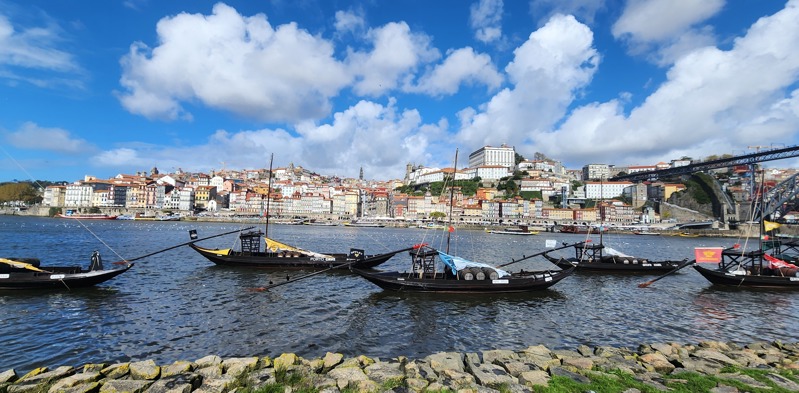
as we alight, our luck takes a turn, and it starts bucketing down. It’s a wet 5-minute walk to our Airbnb, where we are met by our host, who single-handedly lugs our suitcases up the very narrow and steep stairs to the 3rd floor. Our apartment is a very well-appointed broom closet, which is fine as we don't intend to spend much time in it.
On our first morning, we go to the hairdresser, an appointment our Airbnb host had organized for us. The hairdresser couldn't speak English, so all communication was via a translation app. While Robyn was having her hair colored, I was getting a cut. The hairdresser showed me a message in her language app, which said, "Would you like a shampoo for white girls?" Clearly, something got lost in translation, as she hadn’t even asked for my pronouns. Shampoo for white girls? Why not, I thought. During the process, Robyn caught a glimpse of me at the basin and cracked up. I was regretting my choice.
With newly purpled hair, we made our way to the city market. Robyn noticed many changes at the market since her last visit nine years ago. After wandering through the market and enjoying coffee and Portuguese tarts, we spent the rest of the day exploring the old town of Porto. Most of the streets are steep inclines or declines, and all are cobblestone. Many of the streets are very narrow, so much so that we saw a guy walking with a Google Maps camera backpack, equipped with a 360-degree camera extending just above his head. Every corner reveals the next breathtaking moment where history and art intersect. We're staying near the Igreja e

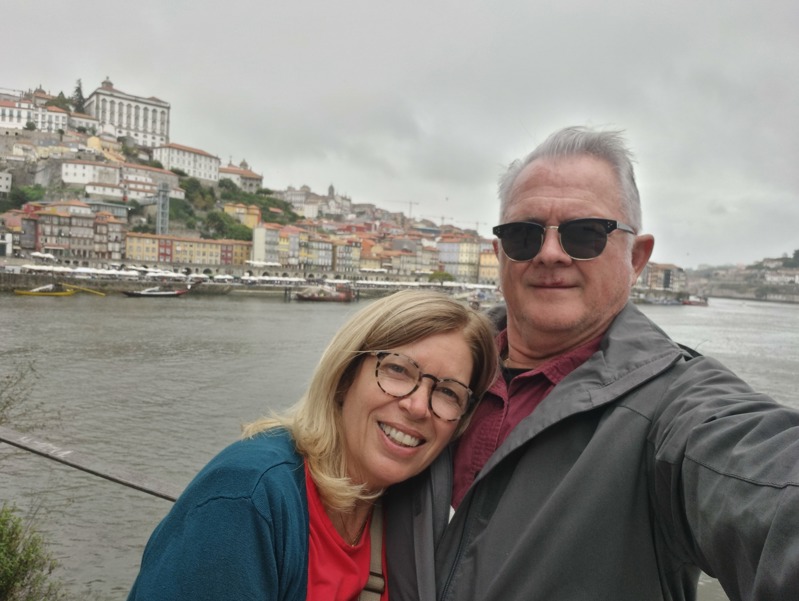

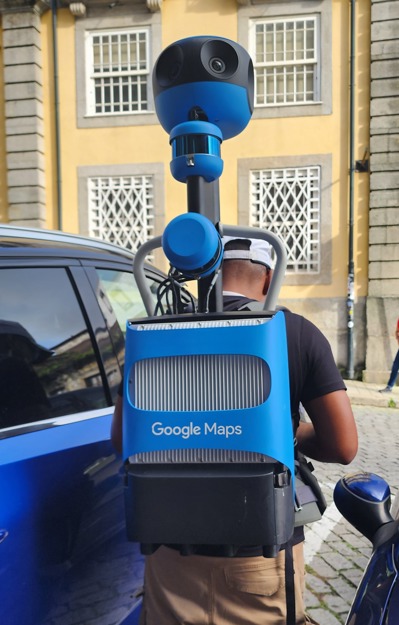

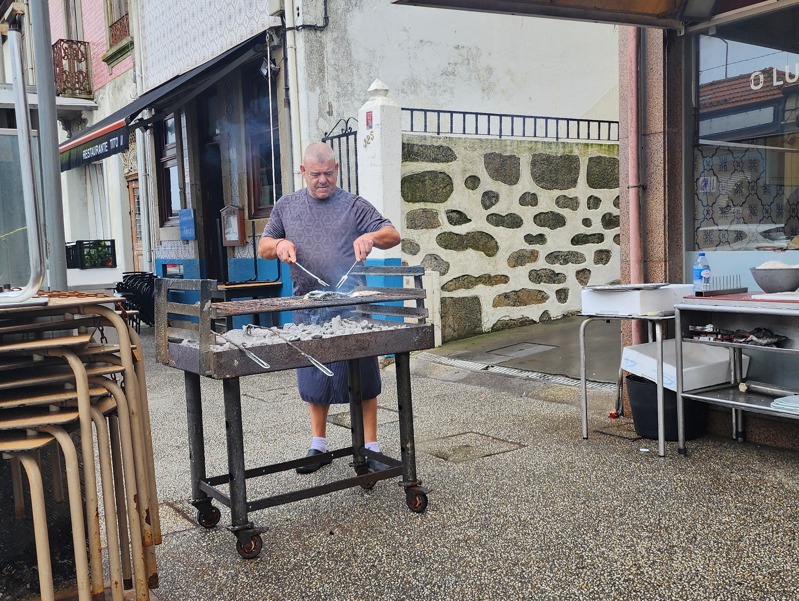
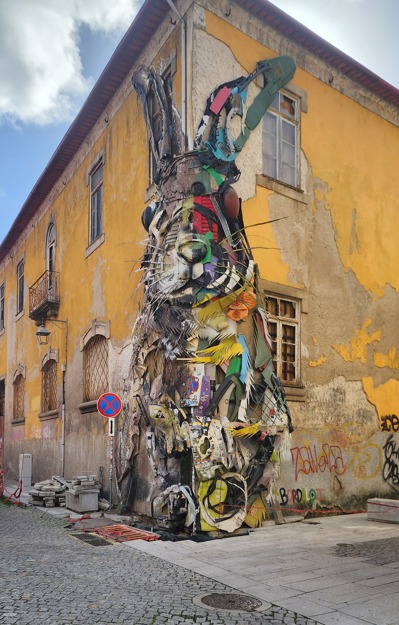
Torre dos Clérigos, a historic church with a very tall bell tower, providing a landmark visible from most parts of town.
We crossed the river several times during our 4-day stay. There are markets, hawkers, and buskers all along the river’s edge, as well as restaurants and port tasting. There are more tourists here in Porto than we’ve experienced anywhere else on this trip, so we always head a street or two back from the river to find more authentic restaurants and enjoy amazing Portuguese cuisine. There is a clash of artistic traditions here that meld seamlessly, from the traditional ceramic tiles that clad most buildings to ultra-modern street art. One building we came across had a lot of scrap metal and plastic waste fixed to the corner. It extended to the top of the 2nd floor and wrapped around two walls from the corner, jutting out by half a metre in places. It's hard to make out exactly what it's meant to be, but in the image you take on your phone, it's clearly a rabbit.
We spent one day down at the beach. Robyn remembered a seafood BBQ
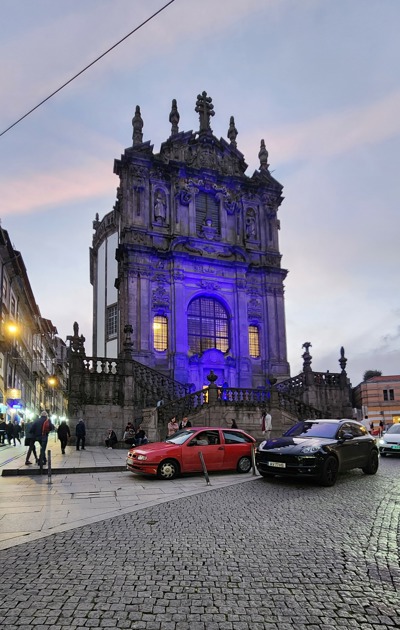
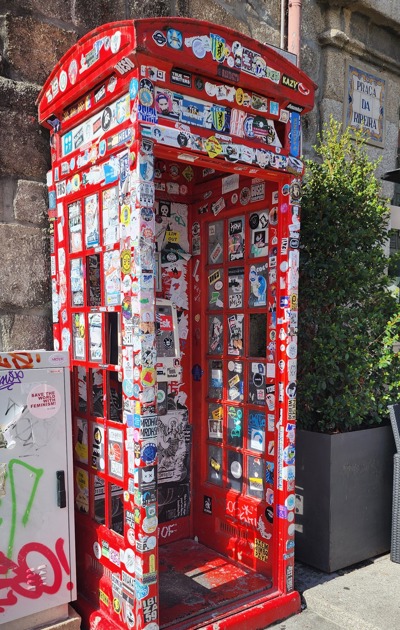
experience from her last visit. We made our way to the metro, finally figuring out how to get a day ticket for two people, and headed to Matosinhos for the day. About two streets from the train stop, we found a line of seafood restaurants with BBQs out front. We took a stroll past all of them before returning to the first, which was the most rustic and appeared to be the most authentic. The BBQ was a simple grate about 20 cm above a tray of coals on wheels. It was an overcast day, with intermittent drizzle, which seemed to have stopped. We asked for a table outside, but the BBQ master gestured about the rain and pointed inside. We assured him we preferred outside, so his staff carried out a set table and chairs for us. We started with six sardines. He took a handful of rock salt from a bowl and lavishly sprinkled the fish with it before placing them on the hot grill. They were at our table five minutes later, enjoyed with a bottle of sparkling white wine. Next came prawns straight from the BBQ, and lunch finished off with some port.
After lunch, we strolled along the seaside. There was a walkway about 12 km
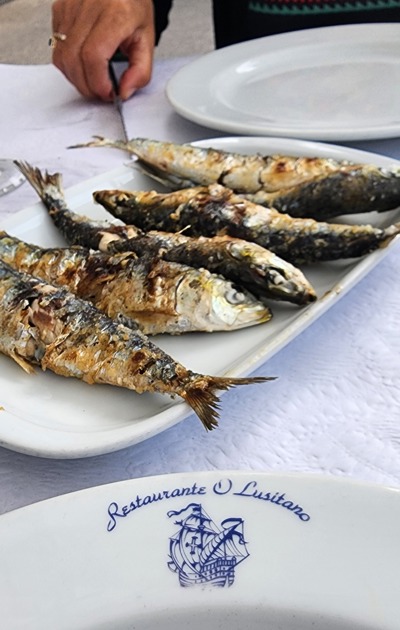

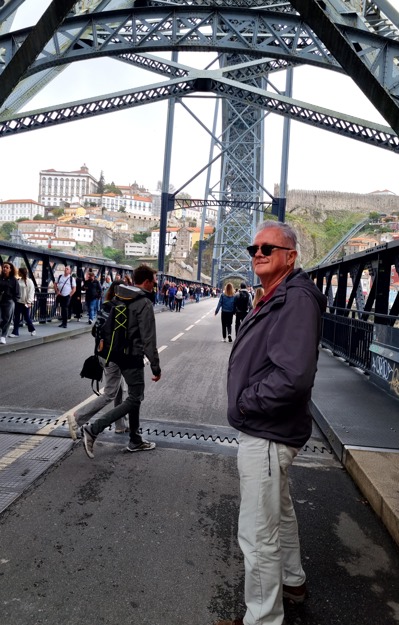



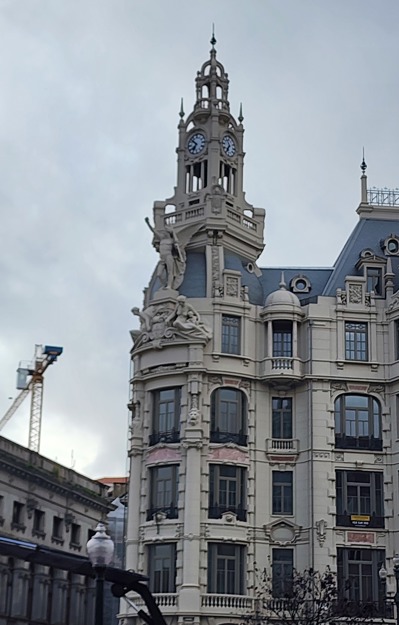
long with two artworks at either end. The first was a traditional sculpture based on a famous painting commemorating Porto's worst sea disaster, which saw hundreds die. It was a solemn work, at odds with all the people taking smiling selfies with it. At the other end of the walk, a giant red sculpture made from wire gently swayed from its suspension above the huge roundabout it featured on. It was a representation of traditional fishing techniques.
Our days in Porto took on a repetitive rhythm—up and out for breakfast, then discovering new parts of the city. We attempted to try the widest variety of Portuguese cuisine and finished most meals with a glass of port. Well after lunch, we’d head back to the broom closet for a rest before heading out again around 7:30 or 8:00.
Given that the only country Portugal borders is Spain, it is curious that there is only a little similarity in language and no similarity in accent.
The final contrast the old city of Porto displays is the number of electric vehicles driving over centuries-old cobblestones. I have never seen this many EVs, especially Teslas, in one place.
Next stop Lisbon.....

1.
Swept out of Broome
2.
To Toulouse
3.
Two Let Loose in Toulouse
4.
Cahors Calls: The Pilgrams Answer
5.
Le Puy Camino: Pilgrims Depart
6.
Marnhac to Montcuq: The Long Walk
7.
Montcuq to Lauzerte: Hitting our Stride
8.
Lauzerte to Durfort-Lacapelette: The Penultimate Leg
9.
Malbec in Moissac: The Tradition Continues
10.
Moissac to Carcassonne: Enroute to the Canal du Midi
11.
Oui Captain: The Canal du Midi
12.
64 Reasons to Love the Canal du Midi
13.
The Captainerie, Gendamerie and the Stolen Phone
14.
Pente d'Eau de Fonseranes: The Last Leg
15.
Beziers: Our Last Days in France
16.
Port in Porto: It's a Tradition
17.
Lisboa: The Home of Fado and Azulejos.
18.
Loule: The Holiday within the Holiday.
19.
Loule Part 2: Minha Casa e Sua Casa
20.
Spain: Hola Amigos
21.
Holy Toledo
22.
Last Stop Madrid: Au Revoir, Adeus, Adios.
23.
That's a Wrap
Share your travel adventures like this!
Create your own travel blog in one step
Share with friends and family to follow your journey
Easy set up, no technical knowledge needed and unlimited storage!